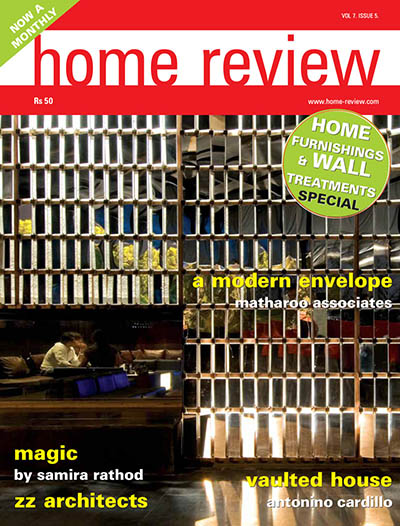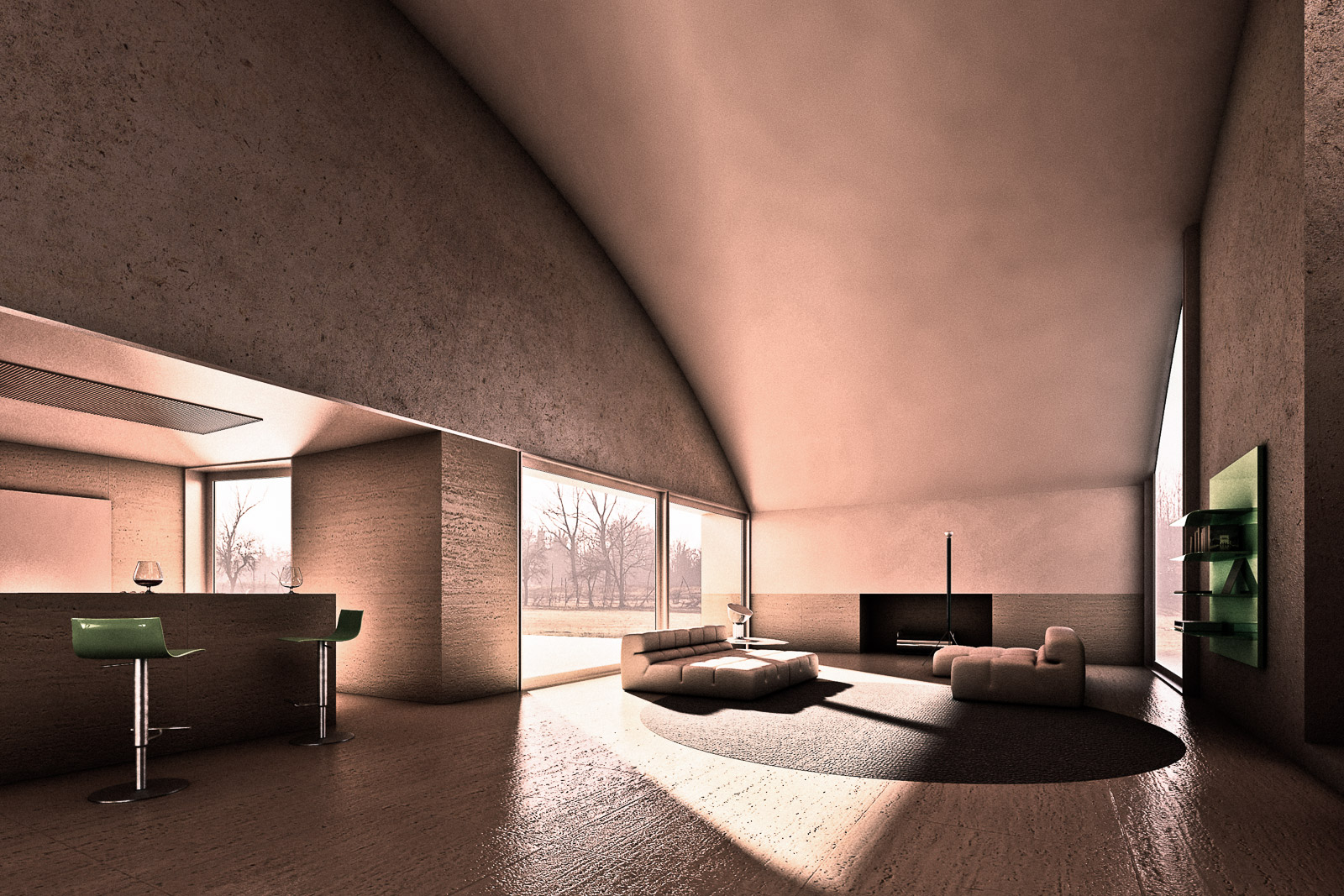
Review
Devyani Jayakar
Creating an arresting tribute with masterful manipulations of interior space and light, Italian architect Antonino Cardillo is inspired by iconic figures from the history of architecture, who have a continuing relevance even today.
“I have no design signature, and I don’t intend to have one either”, says Antonino who believes that the prime responsibility of architects is to interpret their own time. No design signature—that dream of all designers? “I don’t believe in languages or styles. I think that architecture should be mutable, so I don’t find any interest in creating an identity. I try to create my design through progressive hybrid versions and a synthesis of different elements in the world, which are meaningful in the current times. While doing this, my activity isn’t following a linear process”, he explains.
“The design concept was born during a trip to Marrakech. I was fascinated by Bahia Palace, a residential building built at the end of the 19th century by El Haj Mohammed el Mekki, a Moroccan architect and Erkmann, a French military officer. In this palace a rectangular room has twin fireplaces on the shorter sides, and a lower cubical room in the centre of the wider side of the rectangle. So I reinterpreted this diagram, including inside an incongruous element. I’ve added a big barrel vault, an echo of the architecture of the late Roman empire. The strangest thing about this roof is that its curvature follows the wide side of the rectangular hall (while according to the structure it should put it along the shortest side). This large hall seems a strange place: a hybrid architecture, a transfiguration of Mies’s Farnsworth House—with its flexible and continuous rectangular space—or a modern reinterpretation of a church nave with an impression of light from Soane’s renderings of the galleries of the Bank of England building. These have a wonderful aesthetic with regard to light and shadow and I tried to interpret this essence in my Vaulted House”, says Antonino.
The Farnsworth House is a weightless apparition, whereas Antonino’s work has an unmistakable bulk, which does not open the house to nature to an extreme degree. When I remark that I see little resemblance between the ‘living in a glass fish tank’ appearance of Mies’ Farnworth House (except, maybe, for the fluid spaces that run into each other) and his own work, Antonino explains, that the relation with Mies’ Farnsworth House is about the possibility to create an architectural space where proportions are also made by the delicate equilibrium between the different furniture that fills that void. Here, the influence of Kahn is also unmistakable, in the combination of visually compelling spaces with drama, as the changing light transforms the sensory experience of being in the building at different times of the day and night.
In Vaulted House, on the south side the position of the windows welcomes in the winter sun and, through a thick wide cement lunetta, screens the sun in summer. On the opposite side of the hall, to the north, the windows shrink towards the corners, becoming vertical. From floor to ceiling, the openings pick up the fleeting oblique light of the sun at dawn and at sunset in summer which, penetrating the room diagonally, colour the space with new meanings. Finally, moving between the large hall and the tower of the rest room, an azure light, concealing its origins, slips from above along the wooden and cemented walls of the walkways and the stairs accessing the tower, forming an iridescent stage, a picture in the quiet mobility of mutation.
Antonino adds, “At last, this space is multi-functional. This possibility to change the original function, to my point of view, is very important because usually the architecture of the past never maintains its original functions. This idea came to me when I was in Istanbul, dining in a wonderful place called Sarnic. It was originally a Byzantine cistern and being in that place, an extraordinary thought about how the functions of places change in history came into my mind. Therefore I think that the forms of architecture shouldn’t be too connected to the original functions of the structure. So Vaulted House is created with the possibility to modify, in the future, its original function. Now it is a home but tomorrow it could be developed for many uses—restaurant, exhibition space, a gallery, congress hall, and so on …”
Ask Antonino what it means to him to be an architect in Italy, arguably the cradle of some of the greatest architecture in the world, and his answer is articulate, indicative of a fine thinking mind at work. “History isn’t a pool from which each of us can fish out something. The mistake of many architects, was to look at the past as a giant supermarket of different styles, seeing history only through the decoration—forgetting the true essence of architecture which is space, and the communication of ideas between different peoples”, he says.
Antonino believes that in the early years of the 20th century, two different points of view developed about the genesis of the Modern. Most architects, in a reaction against the architecture of the past, wanted to create a new language—forgetting the past, seeing it as a kind of old thing to put aside. But few of them, among them Le Corbusier and many years later, Louis Kahn, thought that the experience of mankind in the past is an extraordinary treasure. The great architectural spaces of the past speak to us about the dreams of the people of each era. Therefore, to live in a country like Italy and in Rome is a wonderful opportunity to study from inside a part of this process and to develop your own personal thoughts on contemporary arch
Antonino’s signature, his ‘architectural voice’, lies perhaps in the absolute purity and consistency of his architectural idea, the way in which he realizes spatial and structural ideals. Every physical element gets distilled to its irreducible essence. Totally uncluttered, the paraphernalia of traditional living such as pictures on walls, even personal possessions—have been virtually banished from sight. His homes are more nearly temple than dwelling, and they reward aesthetic contemplation before they fulfil domestic necessity.

Antonino Cardillo, Vaulted House, Parma, 2008.